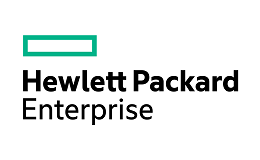HP Enterprise’s Fortunes Declined In Fiscal Q2, But Strategic Partnerships, Cray Acquisition Should Drive Growth
HP Enterprise (NYSE:HPE) reported its fiscal Q2 results late last week, with the company beating consensus expectation on earnings. Notably, revenues came slightly below market expectations as the company exited certain Tier 1 customer segments. A better-than-expected margin figure for the quarter helped the company’s management raise its full-year GAAP EPS guidance by $0.1 from $0.88-$0.98 to $0.98-$1.08.
We currently have a price estimate of $18 per share for HPE, which is around 25% higher than the current market price. Our interactive dashboard on HPE’s Outlook for Fiscal 2019 outlines our forecasts and estimates for the company. You can modify any of the key drivers to visualize the impact of changes on its valuation. Also, you will find more technology company data here.
A Quick Look At HPE’s Revenue Sources
- Will A Covid Recession Affect HPE’s Survival?
- Is Benefitfocus Expensive At $11?
- Is HPE A Buy Below $10?
- Coronavirus Recovery Watch: HP Enterprise Stock Gained 14% Last Week, But Is Still ~40% YTD
- Did HP Enterprise Lose Ground To Cloud Competitors In Fiscal Q2?
- What Is HP Enterprise’s Revenue Breakdown?
HP Enterprise makes money through solutions that capture and analyze data across different endpoints of the network (edge to the cloud). The company reports its revenue ($30.8 billion in 2018) in four segments:
- Hybrid IT ($25 billion in 2018, 79% of total revenue): Segment revenue is derived from the sale of servers, storage, data center networking and professional services offerings.
- Intelligent Edge ($2.9 billion in 2018, 9% of total revenue): Segment revenue is derived from the sale of enterprise networking and security solutions. The segment houses the Aruba brand of offerings.
- Financial Services ($3.7 billion in 2018, 12% of total revenue): Segment revenue is derived from the sale of financing of customer IT consumption.
- Corporate Investments (Negligible revenues): This segment houses Hewlett Packard Labs and business incubation projects.
Revenue trends over recent years, and expectations for fiscal 2019
HPE added $1.1 billion over 2016-2018 (at a CAGR of 2%)
- Hybrid IT revenue fell to $25 billion in 2018 from $25.1 billion in 2016. We expect these revenues to decline further to $24.1 billion (-3.7% y-o-y)
- Intelligent Edge revenue reached $2.9 billion in 2018 from $2.7 billion in 2016. We expect 2019 revenue to reach $3.1 billion (5% y-o-y)
- Financial Services revenue reached $3.7 billion in 2018 from $3.2 billion in 2016. We expect 2019 revenue to remain largely around the same level of $3.7 billion (0.5% y-o-y)
Q2 summary
- Intelligent Edge: Revenue declined to $666 million (-6% y-o-y), driven by weakness in Aruba Product revenue (-8% y-o-y), partially offset by strength in Aruba Services revenue (+16% y-o-y).
- Hybrid IT: Revenue declined to $5.6 billion (-4% y-o-y), driven by weakness in Compute revenue (-5% y-o-y) from the company’s planned exit from certain Tier 1 customer segments.
- Financial Services: Revenue declined to $896 million (-2% y-o-y).
- GreenLake, the company’s subscription driven on-premise offering, saw a strong 39% y-o-y growth in orders and HPE also expanded the scope of the GreenLake through its partnerships with Nutanix and Google cloud.
- The management also shared its excitement about the deal to acquire Cray, a leader in high-end supercomputing solutions, due to the complementary technologies and end markets that the acquisition could bring to HPE. The $1.3-billion acquisition is expected to close in the first quarter of 2020.
We forecast HPE’s EPS figure for full-year 2019 to be $1.42. Taken together with our forward P/E multiple of 13x for the company, this works out to a $18 per share price estimate for the company’s stock, which is about 25% ahead of the current market price.
Do not agree with our forecast? Create your own price forecast for HPE by changing the base inputs (blue dots) on our interactive dashboard.

